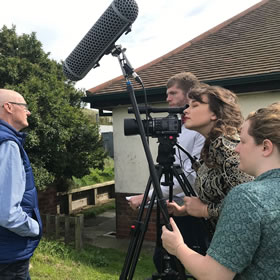Blyth remains in Tier 3
17 December 2020

As revealed on Tuesday night in our blog Blyth remaining in Tier 3, Matt Hancock has today confirmed that the North East will remain in the highest tier until new year.
Speaking in the commons on Thursday morning he said "It's so vital that everyone sticks at it and does the right thing, especially over this Christmas period."
Tier 3 restrictions means pubs, restaurants and cafes will remain closed, with the only exception being those offering takeaway. Households are not allowed to mix indoors or in private gardens.
Blyth like the rest of Northumberland will now stay in tier 3 until the next review early 2021, even though the R* number for the area is between 0.7 and 0.9. It also means Blyth has been in the highest form of restrictions for two thirds of the pandemic - more than areas such as London and York.
Hancock continued "As we enter the coldest months we must be vigilant and keep this virus under control. We've come so far, we mustn't blow it now".
This news comes after the Prime Minister told MPs that the four United Kingdom nations have agreed "in principle" to continue the easing of restrictions over the festive Period but with warnings issued that Christmas should be smaller this year.
Prime Minister Boris Johnson told the House of Commons: "We should exercise extreme caution in the way we celebrate Christmas."
What are the Christmas Rules?
-
Between 23 and 27 December, you can form a "Christmas bubble" comprised of people from three households
- You can travel between tiers and between UK nations to meet your bubble
- You can only meet in homes, places of worship or public outdoor spaces - not pubs or restaurants
- You can meet people outside your bubble according to your local rules
What is a Christmas Bubble?
A Christmas bubble is an extended bubble that can be formed with three households for 5 days over the festive period - 23rd December to 27th December.
Christmas bubbles, support bubbles and childcare bubbles are all different things and have their own specific rules.
The rules on forming and using a Christmas bubble will be the law. You must follow them to minimise the spread of infection.
If you choose to form a Christmas bubble there are three main rules:
- you can only be in one Christmas bubble
- you cannot change your Christmas bubble
- your Christmas bubble should not include people from more than three households
It is important that you keep your Christmas bubble as small as possible.
If you’re in a support bubble at Christmas
A support bubble is typically a single adult in a household joining with another household. Existing support bubbles count as one household towards the Christmas three household limit. This means that if you are in a support bubble, you can collectively form a Christmas bubble with two other households. This applies only to support bubbles as set out in law. You should, however, consider the risks of doing so and keep your Christmas bubble as small as possible. If you are in a support bubble with someone who is over 70 or clinically extremely vulnerable, think carefully.
If you're in a childcare bubble at Christmas
A Childcare bubble is where one household links with one other household to provide informal childcare to anyone under 14.
Between 23 and 27 December, you can continue to use a childcare bubble, but only if reasonably necessary for the purposes of childcare and where there are no reasonable alternatives. If you want to meet socially with the other household in your childcare bubble, you should include them in your Christmas bubble. You and the other household in your childcare bubble would count as two households (not one) towards the three household limit for Christmas bubbles.
*The R number - the reproduction number (R) refers to the average number of secondary infecxtions produced by an infected person. An R rate of 1 means that on average every person who is infected will infect 1 other person. THe higher this is the faster the virus will spread.

